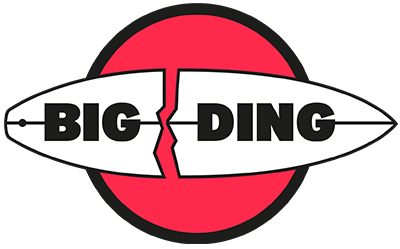Surfboard Repair Wiki: Basics, Tools & Instructions
If your surfboard needs repair, it's important to find a professional who will do the job with precision and care. Repairing a surfboard requires specialized knowledge and skills to ensure the board is working optimally again. In this blog post, you'll learn everything about surfboard repairs - from the most common problems to the best solutions for a permanent fix.
Surfboard repairs are essential to extend the life of your board and continue your surfing experiences without interruptions. When choosing a professional to repair your surfboard, you should look for experience, reliability and quality. Stay tuned for valuable tips on maintaining your beloved surfboard.
key points
- Have essential tools ready: Make sure you have the necessary tools like sandpaper, resin, hardener and repair patches on hand.
- Follow repair instructions: Follow the surfboard repair steps carefully to achieve optimal results.
- Regular care: Care for and maintain your surfboard regularly to prevent damage and extend its lifespan.
- Consider specific windsurfing board tips: Consider the special requirements and repair techniques for windsurfing boards.
- Avoid Polyester Traps: Be sure to avoid polyester traps to make effective repairs.
- Consider professional help: If you have complex damage or uncertainties, you should consider seeking professional help from experts.
Basics of Surfboard Repair
materials science
Surfboards are made from a variety of materials, including foamed and hard surfboard . Foamed surfboards are lighter and provide more buoyancy, while hard surfboards are more stable and durable. When repairing, it is important to remember that foamed boards are more prone to water absorption than hard boards.
Choosing the right material for the repair depends on the type of damage. For example, a cracked surfboard is better suited to repair with epoxy resin on a hard board as this material ensures a strong bond. For a foamed board, polyurethane resin can be used to restore the board.
- Advantages of foamed surfboards: lighter, more buoyancy
- Disadvantages of foamed surfboards: susceptible to water absorption
- Advantages of hard surfboards: more stable, more durable
types of damage
Typical damage to surfboards includes scratches, cracks and dents. Scratches can often be superficial and only require minor repairs such as filling with wax or resin. However, cracks should be repaired immediately to prevent further water ingress.
To identify different types of damage:
- Inspect the entire board for visible signs such as cracks or dents.
- Check the sound of the board by tapping it - hollow tones may indicate delamination.
- Run your hand over the surface - bumps could indicate hidden damage.
Examples of other types of damage include: delamination (detachment of the top layer), fin box damage (damage to the fin box) and tail damage (damage to the rear).
Most important tools
Resin and Hardener - The Importance of Resin and Hardener in Surfboard Repair
Resin and hardener are essential for surfboard repair . The resin acts as an adhesive, while the hardener allows the resin to harden. There are different types of resins such as epoxy resin, polyester resin or vinyl ester resin. The correct mixing ratio of resin to hardener is crucial for a successful repair.
The choice of the right resin depends, among other things, on the material of the surfboard. For example, epoxy resin is well suited for EPS foams due to its flexibility. When mixing resin and hardener, precision is important, as an incorrect ratio can lead to insufficient curing or brittleness.
Different types of hardeners , such as MEKP (methyl ethyl ketone peroxide), are selected depending on the temperature and desired curing time. Curing too quickly can cause problems, so it is advisable to keep an eye on the ambient temperature.
Abrasives - Which abrasives are needed for surfboard repair?
Proper abrasives are required for surfboard repair preparation. Different grits, such as coarse to fine sandpaper, serve different purposes: coarse grits effectively remove old coatings, while finer grits create smooth surfaces.
The correct handling of the abrasives is crucial: even pressure when sanding prevents unevenness in the repair area. In addition, care should be taken to change the sandpaper regularly in order to achieve optimal results.
Coarser grits are usually used to remove old paint or coatings; for detailed work on sensitive areas, finer sandpaper with a higher grit is used.
Application tools - An overview of various application tools for resin
Different application tools play an important role in the application of resins : brushes are good for applying resins over large areas of the surfboard; spatulas, on the other hand, are ideal for spreading them into deeper cracks or holes.
To ensure a clean work process, the tools used should be cleaned regularly – especially between individual work steps.
repair instructions
Filling Holes - How to successfully repair holes in surfboards
To repair holes in surfboards , the correct procedure is crucial. First, the damaged area must be thoroughly cleaned and freed of dirt. Then, the appropriate repair resin is applied to fill the hole. Once the resin has hardened, the surface can be sanded smooth and repainted.
When choosing materials for filling holes, a repair kit and suitable repair resin are essential. The kit often contains everything you need, such as resin, hardener, fiberglass fabric and mixing containers. When purchasing, make sure that the products are of high quality in order to be able to carry out a permanent and genuine repair.
Repairing Cracks - Tips and Tricks for Repairing Cracks in Surfboards
Before starting to repair cracks , it is important to know what type of crack is present: whether it is superficial or deep. Different types require different methods: superficial cracks can often be patched with resin, while deep cracks may need additional reinforcement with fiberglass mesh.
care and maintenance
Regular checks
Surfboards require regular checks to detect damage early. These inspections can help avoid major repairs. When performing checks, look for cracks, dents or detachments.
cleanliness
Before any repair, it is important to clean the board thoroughly to ensure good adhesion of the repair materials. Sand, salt residue and wax residue can affect the repair.
storage
Proper storage of surfboards is crucial for their long life and technical operation.
windsurf board specifications
Laminating vs. Quick Repair
Lamination involves applying a layer of resin to the damaged surfboard and reinforcing it with fiberglass fabric. This method is time-consuming but offers a permanent repair. In contrast, quick repair involves the use of repair kits to quickly fix minor damage. The advantage of lamination is stability and durability, while quick repair is ideal for temporarily repairing small cracks or dents.
The choice between the two methods depends on the type of damage. For larger damage or structural issues, laminating is often the better option as it offers a long-term solution. However, if the scratches are superficial or you want to get back to browsing quickly, quick repair can be effective.
Another consideration when choosing between lamination and quick repair is your skill and experience in handling surfboards. Lamination requires more skill and patience than quick repair.
ventilation screw
The vent screw plays a crucial role in the lifespan of your surfboard as it helps equalize pressure differences and prevent delamination. It is important to make sure the vent screw is adjusted correctly - not too tight and not too loose - to ensure it functions optimally.
Problems related to the vent screw can occur if it is incorrectly adjusted or becomes blocked. This can cause your surfboard to become deformed or even damaged. Regularly checking the vent screw and adjusting it properly is therefore essential for every surfer.
If you have any problems with your vent screw – be it due to leaks or difficulty adjusting it – you should have it repaired as soon as possible.
Avoid the Polyester Trap
Choice of material - Tips for choosing the right material for surfboard repair
When repairing surfboards, choosing the right materials is crucial. Fiberglass mats are ideal for repairing structural damage, while expanded polystyrene is perfect for foam core repairs. It is important to choose the right materials based on the type of damage.
Quality should always be valued over price. Cheap products may be tempting, but poor quality can lead to repeated repairs and ultimately be more expensive. Make sure to use high-quality polyurethane or epoxy resins for long-term results.
It is also worth paying attention to the water-repellent properties of the resins. A good example of this would be a high-quality polyurethane , which is particularly durable and resistant to water.
Application Tips - Useful tips and tricks for a successful surfboard repair
In order to successfully repair a surfboard, some mistakes should be avoided. For example, it is advisable to allow enough time for each phase of the repair and to proceed carefully. Experts also recommend not cutting corners - high-quality materials are essential.
Another tip concerns the preparation of the substrate before applying resin or fillers: The surface must be clean and free of grease and well sanded. This is the only way to ensure lasting adhesion.
Expert advice also emphasizes the importance of evenly distributing resin or filler over the damaged area, as well as removing air bubbles from under the laminates during the drying process.
Mix resin and hardener
mixing ratio
When repairing surfboards, the mixing ratio of resin and hardener is crucial. It is important to determine the correct ratio to perform an effective repair. An incorrect mixing ratio can compromise the repair.
An example of a good mix ratio would be 2 parts resin to 1 part hardener. This will ensure adequate curing of the material. If the ratio is not correct, it may result in the resin not curing properly or even remaining sticky.
It is important to follow the manufacturer's instructions carefully to ensure the optimal mixing ratio. A slight hissing sound when mixing indicates that the process is successful and the chemical reaction is starting.
application
There are different techniques for applying resin to surfboard repairs , such as using a brush or a spray gun. Each method has its advantages and disadvantages in terms of accuracy and speed.
The brush is good for precise work on small areas of the surfboard, while a spray gun can be more efficient on larger areas. It is important to choose the appropriate method according to the repair needs.
Tips for evenly distributing the resin are crucial for a successful surfboard repair job. Applying it evenly ensures that there are no uneven spots and that the repaired board functions optimally.
Quick repairs for windsurfing boards
Best Tools - Recommendations for the best materials and tools for surfboard repair
Surfboard repairs can be necessary with damaged boards , especially in the case of large-scale delamination . In such cases, products such as the so-called Quick Fix Repair Kit are a good choice. These often contain everything necessary to quickly repair minor damage.
Brands like Solarez or Ding All are known among surfers for their reliability. Expert reviews highlight that these brands offer high-quality materials that ensure effective repairs. For example, Solarez resin is easy to use and dries quickly.
To successfully repair a surfboard, you need not only high-quality materials, but also suitable tools. Special repair putties or sanding pads can help to facilitate the process and achieve a professional result.
Areas of application - Where can you have your surfboard repaired?
The question of where to get your surfboard repaired boils down to two options: DIY or professional services. While some surfers like to do their own repairs on their boards, others prefer the expertise of professionals.
DIY repairs offer the advantage of cost savings and flexibility in terms of timing and location. However, it requires both skill and time as well as the right know-how in handling the materials.
Professional repair services often guarantee high-quality work thanks to their experience and specialized equipment. Although this can be more expensive than DIY methods, surfers often get a long-term solution for their damaged boards.
Costs and benefits of the different options
Deciding between DIY repairs and professional services depends largely on individual preference. While DIY may be more cost-effective, mistakes made during the process can result in additional costs.
Use video tutorials
step-by-step help
Surfboard repair can be a tricky business, but video tutorials make the process much easier. Detailed step-by-step instructions will help you learn everything from damage detection to final polishing, so you can get the best results when repairing your surfboard.
Videos offer practical tips and tricks to help you solve any problem. For example, many tutorials show exactly how to repair small dents or cracks. These step-by-step explanations are especially helpful for beginners attempting surfboard repair for the first time.
A successful surfboard repair requires precision and care. With the right video tutorials, you can ensure that every stage of the repair process is done correctly. From preparing the board to painting, every detail is illustrated and explained.
visualization
The importance of visual aids in surfboard repair should not be underestimated. Videos, pictures and instructions play a crucial role in better understanding complex repair tasks. The visual representation makes understanding easier and can help avoid mistakes.
YouTube is an invaluable source of surfboard repair videos of all kinds. There you'll find experts in the industry who can share their knowledge and give you valuable insight. By effectively using visual resources like these, you'll be able to successfully complete even the most challenging repairs.
Videos also help you learn different techniques and find out which ones work best for your specific situation. Whether it's filling a deeper scratch or re-laminating part of your board, visual instructions make it possible.
practical implementation
After working through various video tutorials and gaining a better understanding of surfboard repair, it is important to put this knowledge into practice.
- Gather all necessary materials according to the instructions seen.
- Follow each step carefully; follow the techniques shown.
- After completing each phase, verify correctness by comparing it with the tutorial.
The combination of theoretical knowledge from the videos coupled with practical experience in repairing your own surfboard will not only teach you technical skills but will also increase your confidence in dealing with such tasks.
Finding professional help
Contact and Directions
Surfboard repair services offer various contact options to avail their services. Contact the shop by phone or email to schedule a repair appointment. Some shops also have online booking options on their website. An example of a good surfboard repair shop is "WaveFix". The shop has clear contact details on its website, including phone numbers and an email address.
Surfboard repair shops' opening hours vary depending on location and season. It's advisable to call ahead or check online for current opening hours. Also check the accessibility of the shop - whether it's easily accessible by public transport, for example. At WaveFix, opening hours are Monday to Friday from 9:00 a.m. to 5:00 p.m. and Saturdays from 10:00 a.m. to 2:00 p.m. It's recommended to call ahead.
To avoid long waiting times and to ensure that your surfboard is repaired promptly, some workshops allow you to make appointments in advance. This can be done both by phone and online. By booking in advance, you can ensure that a specialist has time for your repair. For urgent cases, WaveFix also offers express repairs.
payment options
Surfboard repair services usually accept a variety of payment methods for their services. Common options include paying cash directly at the workshop, as well as card payments such as credit cards or debit cards. However, there are some establishments that accept bank transfers in addition to cash - this can be particularly convenient when larger sums are due.
Before you take your surfboard in for repair, it is best to find out about the prices and payment terms of the respective service.
conclusion
Summary
Surfboard repairs require care and expertise to ensure the board functions optimally. Important tips for surfboard repair include using high-quality materials, cleaning thoroughly before repairing, and making precise touch-ups.
It is crucial to repair any cracks or dents immediately to avoid structural damage. When in doubt, always seek professional surfboard repair services. Otherwise, small problems can lead to major damage.
Finally, even after a repair, it is advisable to regularly check the surfboard for damage and take immediate action if necessary. This will keep the board in the best condition for future surfing adventures.
Final Thoughts
Surfboard repair requires skill and the right tools. With the repair and maintenance guides you can keep your windsurfing board in top shape. Don't forget to avoid the specific polyester pitfalls and mix resin and hardener correctly. Quick repairs are also possible, but sometimes it is better to get professional help.
Use the video tutorials and always keep your board well maintained. Remember that regular maintenance can extend the life of your surfboard. So, don't be shy when it comes to repairs - with the right tips and tricks, you can bring your board back to life!
Frequently Asked Questions
What tools are needed for surfboard repair?
For surfboard repair, you will need basic tools such as sandpaper, resin, hardener, fiber mat and brush. Specialized repair tools may be required depending on the type of damage.
How to prevent a windsurfing board from getting caught in a polyester trap?
To avoid your windsurfing board getting stuck in a polyester trap, be careful not to expose the board to direct sunlight for long periods of time and to perform regular maintenance.
Why is it important to mix resin and hardener correctly?
The correct mixing ratio of resin and hardener is crucial for a successful repair. An incorrect mixture can result in the material not hardening or becoming brittle.
Are quick repairs for windsurfing boards effective?
Quick repairs are a good option for minor damage to windsurfing boards. They can provide temporary solutions and allow you to keep surfing. However, for long-term results, professional repairs should be considered.
Where can you find professional help for more extensive surfboard repairs?
For more extensive surfboard repairs, it is advisable to contact specialised surfwear shops or professional repair services. These experts have the know-how and equipment to carry out complex repairs on your board.




